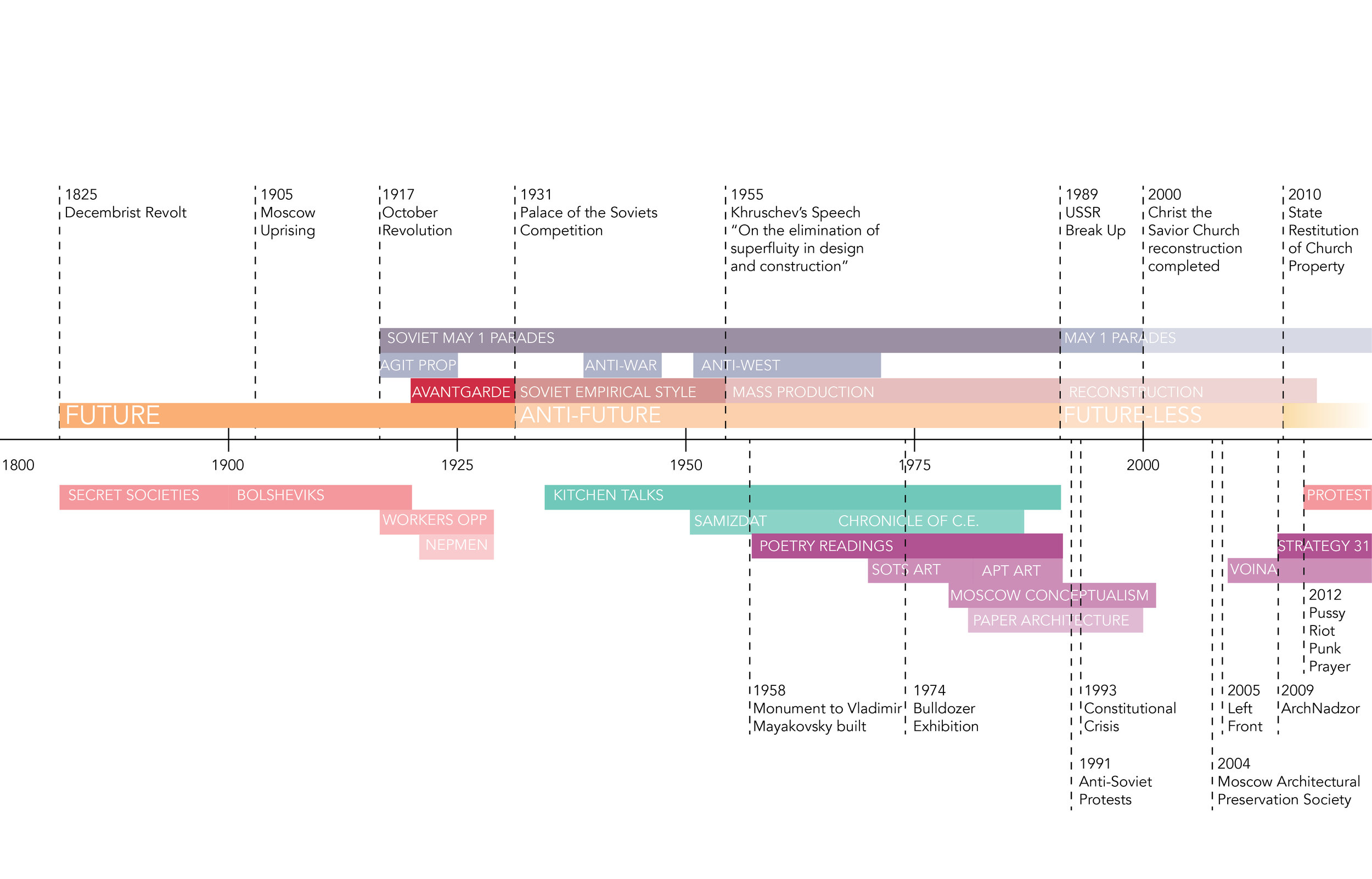PRIVATE SPACE, PUBLIC ACTION
2012-2013
Research conducted at the Strelka Institute
Action begins as a private notion--a whispered fury, a persistent desire, an idea shared behind closed doors, a rebellious act committed with few, or perhaps no, witnesses. Collective action then takes a public stage—a demonstration, a movement, a revolution. Without its private conception, there is no public action.
As a fellow in the Strelka Academic Program in Moscow, Russia from 2012-13, I conducted a research project about the relationship between protest and space, with a focus on the events of the last century in Russia. Beginning with the underground activities which led to the 1917 Revolution up until the recent wave of anti-government protests of 2012, I surveyed critical oppositional movements and the spaces they occupied. This survey revealed that dissident behaviors in the private realm were arguably more influential and effective in the longterm than the mass demonstrations in public space typically associated with protest and revolution. Furthermore, it uncovered a critical connection between Avant Garde design practices and the politically active private realm.
The city of Moscow has a unique history of protest. I analyzed forms of opposition and counterculture not by their political ideologies, but the character of the spaces which they inhabit. In Moscow, highly ideological eras produced some of the most significant innovation in art, architecture, literature and science of the 20th century. The Avant-Garde was born at the height of Russian revolutionary fervor. Motivations of protest, be it a rejection of past or future, were incredible stimulus and inspiration for critical innovation which shaped the nation's future.
In the early years of the new Soviet republic, a young generation of designers were commissioned to design the graphic propaganda and built structures which would demonstrate the emancipation of the workers’ state. Throughout the 1920s and early 1930s, architecture became the means of transformation of society towards a future collectivized life. As the newly established Soviet state was rethinking the future of society, the Avant-Garde was reinventing the everyday. New building typologies emerged as ‘new spaces for the new life of the new man’.
Channelling revolutionary ideals, the Avant Garde reconceived the spatial organization of daily life and social routines. As a result, Constructivism shaped the spaces later used for critical dissident activities during the Soviet era which contributed to the eventual dissolution of the USSR. When public space was heavily restricted by government surveillance, dissent was channelled through private space in the form of kitchen talks and illicit literary practices, creating a network of hidden social spaces of collective action.
The 1932 Palace of the Soviets competition marked the end of the Revolutionary period in Russia as ambitious Avant Garde proposals were denied in preference of a monumental, neoclassical design representing power and stability. From this point on, Soviet architecture was transformed into a demonstration of power and excess, the decadence of the present rather than the pursuit of the future.
When we think of protest, we tend to think of massive crowds in demonstration against a political entity. What is less obvious is that these public manifestations of opposition are actually fueled by a deeper, private creative movements. It is the countercultural undercurrent of opposition which has a broader, and more significant impact on society and its progress. Often the private sphere is strengthened by restrictions against the public sphere. However, in an increasingly public society, the essential backstage social spaces of counterculture and productive dissent are missing.


